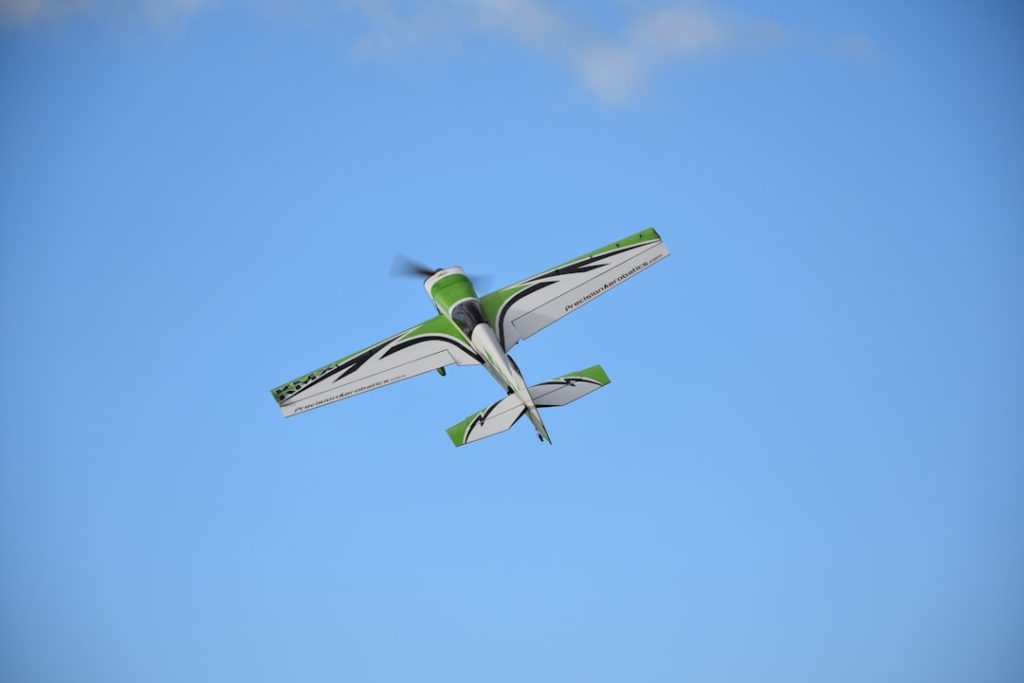The aerospace industry stands at the forefront of technological innovation, driving advancements that not only enhance transportation but also contribute to national security, economic growth, and scientific exploration. As nations strive to maintain their competitive edge in this critical sector, the need for national solutions becomes increasingly apparent. These solutions encompass a wide range of strategies, policies, and collaborative efforts aimed at fostering innovation, ensuring safety, and addressing the challenges posed by rapid technological change.
The advancement of aerospace technology is not merely a matter of improving aircraft or spacecraft; it involves a holistic approach that integrates research and development, regulatory frameworks, and international cooperation. In recent years, the aerospace sector has witnessed significant transformations driven by emerging technologies such as artificial intelligence, autonomous systems, and advanced materials. These innovations have the potential to revolutionize air travel, enhance military capabilities, and enable new forms of space exploration.
However, realizing these advancements requires a concerted effort from various stakeholders, including government agencies, private companies, research institutions, and international partners. By establishing a robust framework for collaboration and investment, nations can harness the full potential of aerospace technology to address pressing challenges and seize new opportunities.
Key Takeaways
- Advancing aerospace technology is crucial for national security and economic growth.
- Government plays a key role in funding and regulating aerospace technology development.
- Collaboration between government and private sector is essential for advancing aerospace technology.
- Key areas of focus for advancing aerospace technology include propulsion, materials, and autonomous systems.
- International cooperation is important for advancing aerospace technology and addressing global challenges.
The Role of Government in Advancing Aerospace Technology
Governments play a pivotal role in shaping the landscape of aerospace technology through policy formulation, funding initiatives, and regulatory oversight. One of the primary functions of government in this context is to create an environment conducive to innovation. This involves investing in research and development programs that support both foundational science and applied technologies.
For instance, the U.S. government has historically funded initiatives through agencies like NASA and the Department of Defense, which have led to breakthroughs in aerodynamics, propulsion systems, and materials science. Such investments not only advance technological capabilities but also stimulate economic growth by creating high-skilled jobs and fostering a competitive industrial base.
Moreover, government regulations are essential for ensuring safety and security within the aerospace sector. Regulatory bodies such as the Federal Aviation Administration (FAA) in the United States establish standards that govern aircraft design, manufacturing, and operation. These regulations are crucial for maintaining public trust in air travel and ensuring that new technologies are integrated safely into existing systems.
As aerospace technology evolves, governments must adapt their regulatory frameworks to accommodate innovations such as unmanned aerial vehicles (UAVs) and urban air mobility solutions. This dynamic interplay between regulation and innovation is vital for fostering a sustainable aerospace ecosystem.
Collaboration between Government and Private Sector in Advancing Aerospace

The collaboration between government entities and the private sector is a cornerstone of advancing aerospace technology. Public-private partnerships (PPPs) leverage the strengths of both sectors to drive innovation and accelerate the development of new technologies. For example, NASA’s Commercial Crew Program exemplifies this collaboration by partnering with private companies like SpaceX and Boeing to develop crewed spacecraft capable of transporting astronauts to the International Space Station (ISS).
This initiative not only reduces costs for taxpayers but also stimulates private investment in space exploration. In addition to specific programs, broader initiatives such as the Aerospace Industries Association (AIA) foster collaboration between government and industry stakeholders. These organizations facilitate dialogue on key issues such as workforce development, regulatory challenges, and technological advancements.
By bringing together diverse perspectives from government officials, industry leaders, and academic researchers, these collaborations can identify common goals and develop strategies to achieve them. The synergy created through these partnerships is essential for addressing complex challenges in the aerospace sector and ensuring that technological advancements align with national priorities.
Key Areas of Focus for Advancing Aerospace Technology
| Key Areas | Metrics |
|---|---|
| Aerodynamics | Drag reduction, lift enhancement |
| Materials and Structures | Weight reduction, strength improvement |
| Propulsion | Fuel efficiency, thrust enhancement |
| Avionics and Control Systems | Automation, navigation accuracy |
| Space Exploration | Distance traveled, scientific discoveries |
Several key areas warrant attention when considering the advancement of aerospace technology. One prominent focus is the development of sustainable aviation solutions aimed at reducing the environmental impact of air travel. With growing concerns about climate change, the aerospace industry is under pressure to innovate in areas such as alternative fuels, electric propulsion systems, and more efficient aircraft designs.
Initiatives like the European Union’s Clean Sky program exemplify efforts to promote research into greener aviation technologies that can significantly reduce carbon emissions. Another critical area is the integration of advanced digital technologies into aerospace systems. The rise of artificial intelligence (AI), machine learning, and big data analytics presents opportunities for enhancing operational efficiency and safety in aviation.
For instance, predictive maintenance powered by AI can help airlines anticipate equipment failures before they occur, thereby minimizing downtime and improving safety outcomes. Additionally, digital twins—virtual replicas of physical systems—can be used to simulate aircraft performance under various conditions, enabling more informed design decisions and operational strategies.
The Importance of National Security in Advancing Aerospace
National security considerations are deeply intertwined with advancements in aerospace technology. The ability to maintain air superiority and ensure secure transportation routes is paramount for any nation’s defense strategy. As geopolitical tensions rise globally, countries are increasingly investing in advanced aerospace capabilities to safeguard their interests.
This includes developing next-generation fighter jets equipped with stealth technology, unmanned aerial systems for surveillance missions, and advanced missile defense systems. Furthermore, space has emerged as a critical domain for national security. The establishment of military space commands in various countries underscores the recognition that space capabilities are essential for modern warfare.
Satellites play a vital role in communication, navigation, reconnaissance, and missile warning systems. As such, nations are prioritizing investments in space technology to enhance their strategic capabilities while also addressing vulnerabilities associated with reliance on foreign satellite systems.
Challenges and Opportunities in Advancing Aerospace Technology

While the potential for advancing aerospace technology is vast, several challenges must be navigated to realize these opportunities fully. One significant challenge is the high cost associated with research and development in this sector. Developing new aircraft or spacecraft can require billions of dollars in investment, which can be a barrier for smaller companies or startups looking to innovate.
To mitigate this challenge, governments can provide funding incentives or grants that encourage private investment in aerospace R&D. Another challenge lies in the rapid pace of technological change itself. As new technologies emerge at an unprecedented rate, regulatory frameworks often struggle to keep pace.
This can lead to uncertainty for companies seeking to introduce innovative products or services into the market. For example, regulations surrounding UAVs have evolved slowly compared to the rapid advancements in drone technology. To address this issue, governments must adopt agile regulatory approaches that allow for experimentation while ensuring safety and security.
International Cooperation in Advancing Aerospace Technology
International cooperation is essential for advancing aerospace technology on a global scale. Collaborative efforts among nations can lead to shared knowledge, resources, and expertise that drive innovation forward. Programs like the International Space Station (ISS) exemplify successful international partnerships in aerospace exploration.
The ISS brings together space agencies from multiple countries—including NASA (United States), Roscosmos (Russia), ESA (European Space Agency), JAXA (Japan), and CSA (Canada)—to conduct scientific research in a unique microgravity environment. Moreover, international agreements on standards and regulations can facilitate smoother collaboration between countries in areas such as air traffic management and environmental sustainability. Organizations like the International Civil Aviation Organization (ICAO) play a crucial role in establishing global standards that ensure safe and efficient air travel across borders.
By fostering international cooperation in these areas, nations can collectively address challenges such as climate change while enhancing global aviation safety.
The Future of Aerospace Technology: National Solutions
Looking ahead, the future of aerospace technology will be shaped by national solutions that prioritize innovation while addressing pressing global challenges. As countries invest in research and development initiatives focused on sustainable aviation practices, we can expect significant advancements in fuel efficiency and emissions reduction technologies. The push towards electric aircraft is gaining momentum as battery technology improves; this could revolutionize short-haul flights by providing cleaner alternatives to traditional jet fuel.
Additionally, advancements in autonomous systems will likely redefine air travel experiences for passengers while enhancing operational efficiency for airlines. The integration of AI-driven systems into air traffic management could lead to more efficient routing and reduced congestion at airports. As nations continue to collaborate on these advancements through public-private partnerships and international agreements, we can anticipate a future where aerospace technology not only meets the demands of modern society but also contributes positively to global sustainability efforts.
In conclusion, advancing aerospace technology requires a multifaceted approach that encompasses government involvement, private sector collaboration, focus on key areas such as sustainability and digital innovation, consideration of national security implications, navigation of challenges while seizing opportunities, fostering international cooperation, and envisioning a future driven by national solutions that prioritize both innovation and responsibility.


